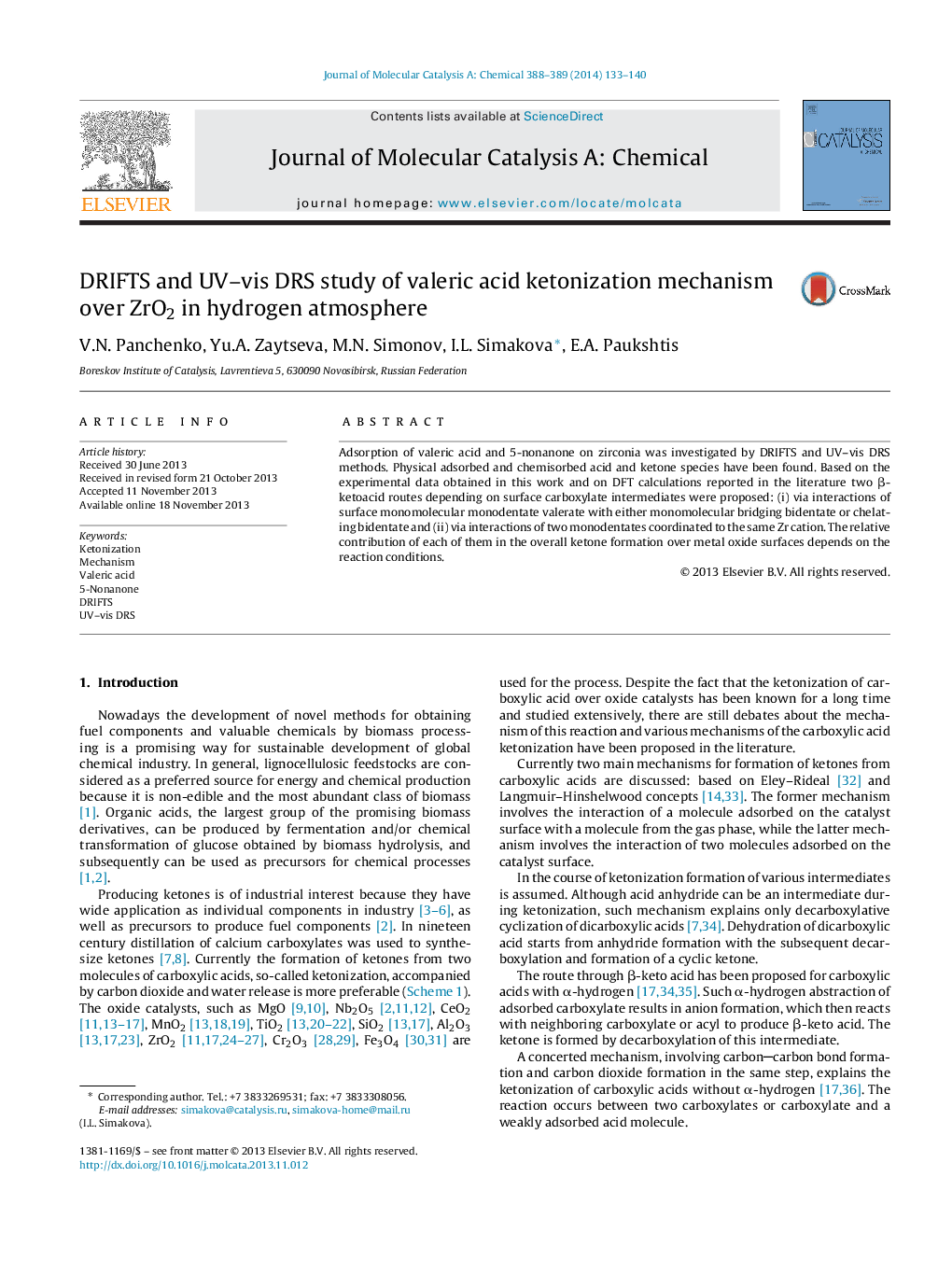| کد مقاله | کد نشریه | سال انتشار | مقاله انگلیسی | نسخه تمام متن |
|---|---|---|---|---|
| 65570 | 48396 | 2014 | 8 صفحه PDF | دانلود رایگان |

• Lewis acid sites are responsible for valeric acid to 5-nonanone conversion on ZrO2.
• Four different valerate adsorption species were identified by FTIR.
• Two mechanisms of ketonization depending on valerate configuration were proposed.
Adsorption of valeric acid and 5-nonanone on zirconia was investigated by DRIFTS and UV–vis DRS methods. Physical adsorbed and chemisorbed acid and ketone species have been found. Based on the experimental data obtained in this work and on DFT calculations reported in the literature two β-ketoacid routes depending on surface carboxylate intermediates were proposed: (i) via interactions of surface monomolecular monodentate valerate with either monomolecular bridging bidentate or chelating bidentate and (ii) via interactions of two monodentates coordinated to the same Zr cation. The relative contribution of each of them in the overall ketone formation over metal oxide surfaces depends on the reaction conditions.
Figure optionsDownload high-quality image (55 K)Download as PowerPoint slide
Journal: Journal of Molecular Catalysis A: Chemical - Volumes 388–389, July 2014, Pages 133–140